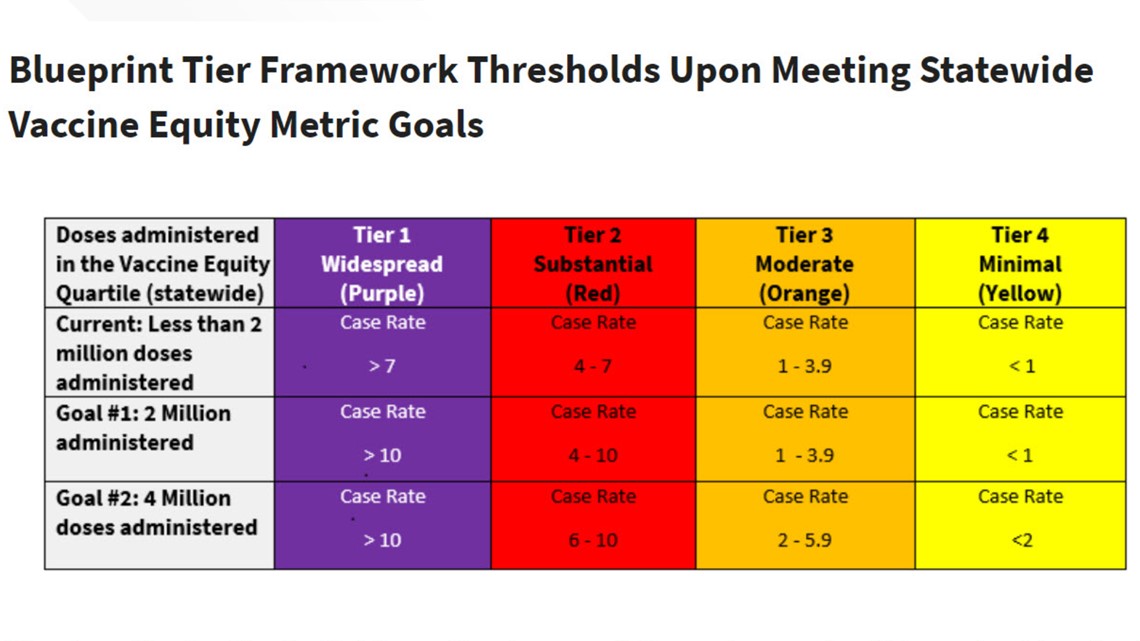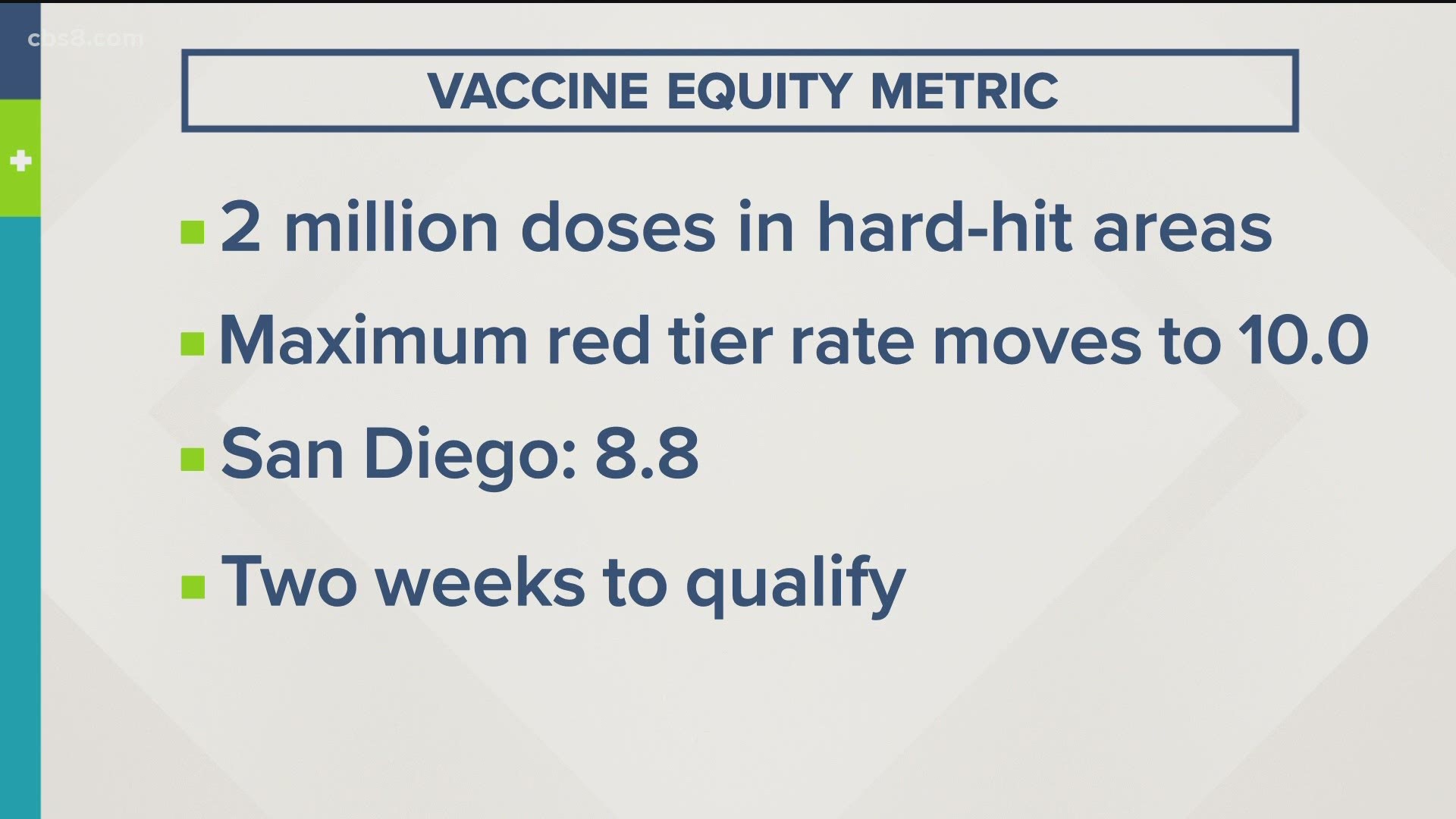SAN DIEGO COUNTY, Calif. — Gov. Gavin Newsom says the state on Friday will meet its threshold of administering 2 million COVID-19 vaccine doses in low-income, hard- hit communities, triggering a change in the state's "Blueprint for a Safer Economy" that will advance Southern California into the "red" tier of that matrix and clear a path for more businesses to reopen.
The governor says California has reached 10 million vaccine doses which no other state in the country has done. The state has been using a four tier color coded system to guide schools and businesses when they can re-open.
Currently, a county can move from the most restrictive purple tier to the red tier when it passes several metrics, including seven or fewer daily new infections per 100,000 residents.
According to the California Department of Public Health's website, once the state distributes two million vaccine doses to the most vulnerable areas of the state, the state will modify the metric to 10 new cases or fewer per 100,000 residents.
Modifications to the Blueprint will primarily include two approaches: (1) shifting the tier threshold to higher case rates per 100K population per day based on meeting vaccination thresholds within Vaccine Equity Quartile communities and; (2) changing certain sector specific guidance and issuing new sector guidance to incorporate learnings from the last year about how the virus spreads.
Statewide Vaccine Equity Metric Goal #1:
Purple (Widespread) tier will shift from greater than 7 cases per 100,000 to greater than 10 cases per 100,000; and the Red (Substantial) tier will be widened to 4-10 cases per 100,000 when:
- 2 million doses have been administered to persons living in the Vaccine Equity Quartile. (assessed statewide).
Orange (Moderate) and Yellow (Minimal) tier ranges will remain the same.
Statewide Vaccine Equity Metric Goal #2:
Purple (Widespread) tier threshold will remain at greater than 10 cases per 100,000, Red (Substantial) tier case rate range will narrow to 6-10 cases per 100,000; and the Orange (Moderate) tier case rate range will shift to 2-5.9 cases per 100,0000. The Yellow (Minimal) tier case rate range will shift to less than 2 cases per 100,000 when:
- 4 million doses have been administered to persons living in the Vaccine Equity Quartile (assessed statewide).


Last week, the governor said earmarking 40% of vaccine does to vulnerable areas could speed reopening. It's all in an effort to inoculate people most at risk from getting COVID-19. The most vulnerable areas are based on household income, education level and housing status. The governor says targeting the vaccine doses strategically will help to reduce transmission of the virus.
Below is a breakdown of what can open when a county is in the red tier.
RED TIER RESTRICTIONS
- Hair salons: open indoors with modifications
- Retail: open indoors at 50% capacity
- Malls: open indoors at 50% capacity and limited food courts
- Nail salons: open indoors with modifications
- Electrolysis: open indoors with modifications
- Personal care services (body waxing, etc.): open indoor with modifications
- Tattooing and piercing: open indoors with modifications
- Museums, zoos and aquariums: open indoors at 25% capacity
- Places of worship: open indoors at 25% capacity or 100 people, whichever is fewer
- Movie theaters: open indoors at 25% capacity or 100 people, whichever is fewer
- Hotels: open with modifications, plus fitness centers can open at 10% capacity
- Gyms: open indoors at 10% capacity
- Restaurants: open indoors at 25% capacity or 100 people, whichever is fewer
- Wineries: outdoor only
- Bars and breweries: closed
- Family entertainment centers: outdoor only, like mini golf, batting cages and go-kart racing
- Cardrooms: outdoor only
- Non-essential offices: remote work only
- Professional sports: outdoor only at 20% capacity starting April 1
- Schools: can reopen for in-person instruction after five days out of the purple tier
- Theme parks: can reopen at 15% capacity starting April 1
- Live performances: outdoor only at 20% capacity starting April 1
WATCH: The governor gave one on one interviews to a handful of reporters and spoke to News 8’s Marella Lee.

